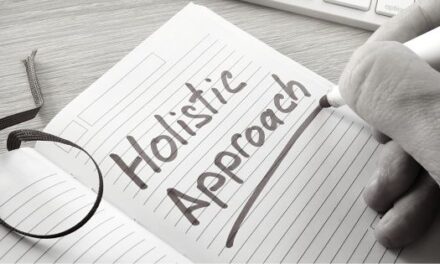In my last post on this subject, I made the following two statements –
“vision and mission statements have become so watered down in the corporate world that they are basically meaningless”
and
“vision and mission provide direction for a business, without which it is difficult to develop a workable plan”,
And then dug quite deeply into the mission statement side of the equation, which was putting the cart slightly ahead of the horse! So, in this post I’d like to take a closer look at the vision statement, without which the effective mission statement is almost impossible to develop.

The company leaders or directors usually develop the classic vision statement at the annual leadership retreat, because “it is the right thing to do” and it formed part of the CEO’s recently acquired MBA. The whiteboard is cleaned, the water jugs are refilled, and everybody in the room is expected to contribute “visionary” words that are applicable to the company. Once the creative momentum expires, everybody votes on the words that they believe are the most applicable, and then those are shoehorned into a sentence that has everybody nodding furiously once it is complete. Two weeks later, nobody can remember the entire sentence, and after six weeks in the real world of business, most of the people who created the sentence have forgotten that they were even part of the process!
This kind of vision statement will never work, primarily because it is not founded in reality. And for most of us in business today, spending time on things that don’t work, is a luxury we cannot afford, and just plain dumb. So let’s deconstruct the process and see if we can save any of the pieces.
Getting out of your office is a great idea, so let’s keep the company retreat or something similar. You need to create an environment that is free of interruptions and the limitations of everyday activities. Going “retro” or “old school” and turning off laptops, tablets, and associated tech so that you can revert to pen and paper will also help to marshal your thoughts. Now you need to answer one seemingly simple question – where do you want your business to be (three) years from today? Depending on the current state of your business you may want to adjust the time period, but keep the focus on “where”. The mission statement exercise will take care of the “what”, “how” and “for whom” questions, so make sure you don’t get bogged down in those at this point of the exercise. Allow yourself to jot down random thoughts that you can structure more coherently later, and if you are comfortable with the process, this is the perfect environment in which to do some mind mapping.
Now, for those of you who are starting to smell incense, and hear finger cymbals and gongs, relax! All we are trying to do is to vision -a- lise (visualise) the future, and we will turn that into a very focused and practical exercise in just a second. For now I want to draw your attention to your favourite sporting code, and the top performers in that arena. Top athletes use visualisation all the time, and it is clearly evident whenever a significant level of individual skill is required. Whether it is a golfer putting to win a Masters event, or the deciding penalty to win any one of the football codes, you will see the individual stand very still, often close their eyes, and then make small movements that mimic the activity they are about to perform, before opening their eyes, taking a breath, and then putting, serving, kicking, throwing, or jumping. And their subsequent activity is a mirror image of what they have just visualised.
If you are not into sport, let’s talk architecture. Architects spend hours interviewing their clients to develop as specific a brief as possible, from the building owner’s description of what they want the finished product to look like. In most cases, the owner of the building does not know how to build the building, but they know exactly what they want it to look like at the end of the process. The architect then uses that brief to develop a series of sketches and drawings until eventually the building owner is satisfied that he is looking at an accurate representation of what he wants – in other words his…… vision! The architect then draws the exact plans that are necessary for the building to be constructed (mission) and the builder then brings the owners vision into reality (execution).
Now let’s get practical. When we answer the ” where do you want your business to be (three) years from today?” question, we need to visualise ourselves running the business we want to build. As you walk around your “3 years from now” office, write down what you see; what do you hear your staff talking about? Who are your clients and what are they saying?; What do your marketing materials look, feel, and sound like?; How is the business running day-to-day?; What are you doing on a daily basis?; Are you getting any kind of media coverage, and if so, what are they writing about?; What do your financial results look like?; I think by now you are starting to get the idea, and hopefully the finger cymbals and gongs are getting quieter, and the aroma of incense is fading.
Now you need to take the rough notes (or the mind map), and put together, in as much detail as you can, what your business will look, sound, smell, feel, and (if applicable), taste like. Your final document needs to cover every part of your business, under the headings of Human Resources, Marketing, Financial Management, Operations, and Research and Development, and as many subheadings as you need to adequately describe the picture you have developed, and the interactions between your business areas.
Now you have a document that will allow the rest of your team to develop the “what”, “how” and “for whom” questions in order to craft the Mission Statement we spoke of in the previous post. Once you have your Vision and Mission statement in place, your team is easily able to create the necessary plans to make the future come true, and that is when effective alignment happens almost automatically.
The final, and hugely important, step in this process is communicating the Vision, Mission, Purpose and Values constantly and creatively. Everybody needs to always be able to see what the future looks like, so that they can do what is necessary today to bring that into being. Leaders need to develop systems that communicate the same message constantly to employees, suppliers, and customers in such a way that culture is created.
To go back to our earlier architectural example, when the building plans are signed off, they are handed to the builder, and his workers just follow the plan day-by-day, to make the owner’s vision come true. When the vision is clear, and the plan is practical, the future happens because everybody is literally on the same page.
Because I know that explaining the process is easier than doing it, I would love to help you develop a clear vision and mission statement for your business or team. Having an objective and experienced facilitator walk you through the process is far easier than struggling through it on your own. If you would like some help, or even just a chat on some of the pointers, leave us a comment below.



















